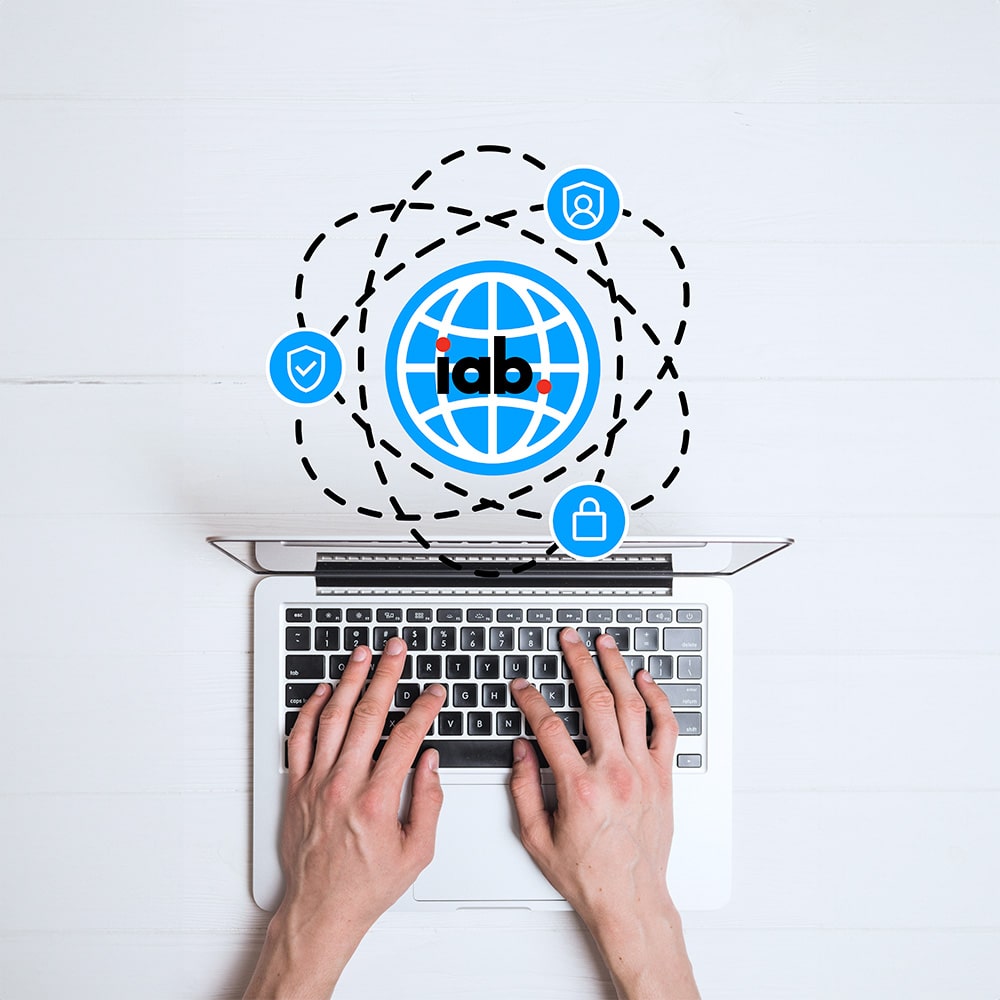The internet is the largest and deepest information system humanity has ever built. It grows exponentially at an almost incomprehensible rate. The number of existing websites is impossible to gauge, though latest estimates point to the billions. During its 25-year history, the commercial web has evolved from a static and billboard-like collection of documents to become a real-time, dynamic multimedia network of platforms, supply chains, commerce, entertainment, geopolitics, and pretty much everything else. The world’s economy is a wired economy, and the web is its operating system.
Websites have always been the main atomic unit of the network. Since the 1990s, businesses large and small have realized that their online presence is a powerful signpost for their brands — their unique digital embodiment — and one of the most important touchpoints for consumers and audiences alike.
The home page has evolved in similar ways. It first appeared as a static collection of contact information. Now, it’s a mobile and dynamic surface that connects all of the outward-facing operations and communications layers of nearly any business. This evolution is a shared story between technology, design, and consumer expectations.
The introduction and standardization of web-native languages like HTML, CSS, and JavaScript has been pivotal. So has the shift to mobile, and the rise of programmatic advertising that built the foundations of the creator economy. This is a story about how we engage with digital spaces, how we transact, and build communities.
Just as the emergence of social media platforms restructured our understanding of online identity, the widespread use of consent management platforms has now restructured web navigation. What began as a regulatory compliance requirement — stemming from the implementation of the GDPR in 2018 — has evolved into a sophisticated touchpoint that mediates not just human-website interactions, but increasingly, AI-website exchanges as well.
The cookie banner is the public interface of these infinite data flows. It has developed into an important tool that signals brand values, initiates customer relationships, and defines the intersection of trust, technology, and commerce.
The open and decentralized nature of the internet will continue driving innovation in data privacy. Brands that recognize this and adapt their strategies accordingly will find themselves ahead of the curve, leveraging the web’s newfound vitality to build stronger, more direct relationships with their audiences.
A brief history of the home page
In the early 1990s, the web consisted primarily of text-based websites due to technological limitations and slow connection speeds. The digital landscape was essentially a static collection of simple documents, which functioned more as digital billboards than interactive environments.
The end of the decade marked a significant maturation period for web design. The introduction of HTML 2.0 in 1995 brought transformative upgrades, introducing graphics capabilities and table structures that expanded creative possibilities for designers and developers. This period also saw the emergence of JavaScript and CSS. These technologies would become foundational to web interactivity, visual design, and eventually sophisticated ad delivery systems.
Contemporary web design and development
Google launched AdWords in 2000. This innovation fundamentally changed digital advertising by connecting ads to search queries rather than just web page content. It also laid the groundwork for the search giant’s eventual dominance of the digital advertising landscape.
During this same period, web design philosophy underwent a fundamental shift toward user-centric approaches, creating an inherent tension between user experience goals and increasingly sophisticated advertising needs.
The mid-2000s saw two parallel revolutions: Web 2.0, which transformed websites into dynamic, content-driven environments through platforms like Facebook and WordPress, and the emergence of programmatic advertising.
In 2007, major ad exchanges launched, enabling the automated buying and selling of ad impressions in real time. This marked the beginning of real-time bidding. This technology meant that advertisers could target individual users rather than just website placements, dramatically increasing the volume and value of user data being collected.
The 2007 introduction of the iPhone triggered the mobile revolution, reshaping web design and creating new advertising channels through the App Store. The rise of smartphones accelerated Google’s ad expansion through Android and mobile search.
By 2009, behavioral targeting had become standard practice, with ads following users across the web based on their browsing history. This shift fundamentally altered the relationship between users and the websites they visited.
This ad-powered economic model drove the proliferation of cookies and tracking technologies. Websites began connecting to dozens of third-party data collection services. The resulting data ecosystem became increasingly opaque to users, even as it grew more sophisticated in its ability to target them.
The value exchange implicit in this model — free content in exchange for user data — operated largely without explicit user consent or awareness.
By the late 2010s, public concern over data privacy reached a tipping point, leading to landmark regulation. The implementation of the GDPR in 2018 marked a profound shift that quickly became internationally influential. The regulation required explicit consent for data collection practices that had previously operated in the background.
From home pages to consent interfaces
The 2020s have seen this tension continue to evolve. Programmatic advertising continues to dominate digital marketing, but with increased emphasis on first-party data relationships and user consent. What was once a largely invisible technical infrastructure has transformed into an explicit negotiation between brands and their audiences.
This transformation has fundamentally altered the website as a conceptual space. Where the home page once served as the primary entry point and defining experience of a brand’s digital presence, the consent interface now frequently precedes it. It has become the true “front door” of the digital experience.
For many users, their first interaction with a brand is no longer with carefully crafted marketing messages or user-centered design elements. Instead, it’s with a legal and technical framework requesting permission to collect their data.
The evolution of the cookie banner also reflects broader changes in both how we design digital spaces and our relationship with them. Rather than simply accepting data collection as the price of admission to digital spaces, users increasingly expect meaningful choices, clear explanations, and tangible value exchanges.
The most sophisticated consent interfaces don’t just ask for permission, they educate users about data practices and offer granular controls that respect individual preferences.
This is a new model for digital engagement, one that acknowledges the increasing sophistication of both users and the data ecosystems they inhabit.
The Anatomy of modern consent management
The cookie banner sits at the intersection of regulatory frameworks, user agency, and computational architecture. Beyond the toggles and buttons, these systems mediate between privacy requirements and business imperatives while managing data flows between people, websites, and third-party services.
At its core, the modern consent management platform (CMP) is also an expectation manager — balancing competing demands from both the business and the customer side. This architecture mirrors the broader transformation of the web from a one-way content delivery system to a negotiated space where value exchange is made explicit, and user autonomy is a core design principle.
Technical architecture and user experience
Websites that respect user privacy must enforce regulatory compliance across different jurisdictions while maintaining website performance, capturing accurate preference data, and delivering a seamless user experience.
Modern CMPs function as distributed preference networks, storing consent signals in browsers and servers while signaling these choices to authorized vendors in real-time.
The user experience layer of consent interfaces has also rapidly evolved. It has moved beyond legally-mandated checkboxes to intuitive interactions that make intricate data policies easier to understand.
Leading CMPs employ progressive disclosure models that enable users to explore increasingly detailed information based on their interest and privacy sensitivity.
Interface design for consent management involves unique challenges, balancing the need for clear, unambiguous choices with the business need for data collection. This has led to the rise of consent UX, which focuses on preference architecture, readability optimization, and interaction patterns that respect user agency without overwhelming them with technical details.
As AI agents increasingly navigate these interfaces on behalf of humans, marketers and website owners must now consider both human decision-making and machine readability, creating universal design patterns that serve multiple types of users simultaneously.
Brand expression through privacy interfaces
Forward-thinking organizations recognize that these touchpoints create unique opportunities to communicate core values to their audiences.
The aesthetic and tonal qualities of a consent interface — from visual design and copywriting to interaction patterns and default settings — serve as powerful signals of an organization’s philosophy toward user data and privacy rights.
Companies that demonstrate respect for user autonomy through transparent, non-manipulative consent flows set themselves apart in a digital ecosystem often characterized by deceptive patterns and obfuscation.
The most effective implementations align privacy interfaces with broader brand narratives. They create coherent experiences in which the consent dialogue feels like a natural extension of the brand relationship, rather than a regulatory intrusion. This integration extends beyond visual consistency to include voice, tone, and the core message conveyed through privacy policies and consent options.
The strategic role of consent interfaces has become increasingly apparent as consumers become more privacy aware. A well-executed cookie banner does more than enable legal compliance. It also signals a brand’s ethical stance regarding user data and builds trust through transparency and respecting choice.
Organizations that prioritize clarity and genuine options on their websites differentiate themselves in crowded markets where trust has become a scarce — and therefore valuable — commodity. When users feel empowered rather than manipulated by privacy interfaces, they develop deeper brand affinity, engage more meaningfully with content, and demonstrate greater willingness to share their data.
As cookie banners become permanent fixtures in the digital landscape, the most successful organizations treat them not as conversion obstacles but as strategic assets in building authentic, consent-based relationships with their audiences. These relationships are characterized by mutual respect rather than exploitation.
AI agents and the open web renaissance
In a peculiar twist of digital fate, the rise of autonomous AI agents is breathing new life into the open web. This is despite the fact that many predicted this ecosystem would be strangled by artificial intelligence’s summarization capabilities and new search engine modalities.
These computational agents are catalyzing a renaissance in web architecture and challenging our assumptions about digital interaction. They’re designed to navigate the web like human users rather than accessing data through application programming interfaces (APIs).
This is a deliberate design and architectural choice by companies like OpenAI and Anthropic. Assistants like Operator or Claude are browser-based and must contend with the same interfaces humans encounter, including cookie banners and consent management mechanisms.
Browser-based AI assistants interact directly with web elements (HTML, JavaScript, HTTP requests) to automate tasks and extract data without requiring API integrations. This eliminates the need for developers to implement custom programming interfaces for each service, which simplifies deployment and reduces technical overhead. It also highlights the web’s enduring role as the connective tissue of digital spaces.
This represents more than a technical implementation detail. It signals a profound shift in how we imagine the relationship between artificial intelligence and digital infrastructure. These agents become participants in the social contract of the web, challenging our current models of user experience — and soon, the definition of users themselves.
How autonomous agents interact with consent mechanisms
The implications are serious and affect multiple layers of the digital ecosystem. Consider how these AI agents interact with consent management platforms. They must parse natural language descriptions of data usage, evaluate privacy implications, and make informed decisions about consent — much like human users.
This reflects a deeper truth about privacy and agency in the digital age: consent is not just a yes or no choice but a nuanced, contextual negotiation of values and trade-offs.
AI agents must understand the often deliberately ambiguous language of privacy policies and other documentation. They need to recognize manipulative design elements (sometimes used as defaults) and identify excessive data collection requests that a privacy-conscious human might reject.
Unlike humans who might click “Accept All” out of fatigue or frustration, AI agents can potentially maintain consistent privacy preferences across thousands of interactions. Essentially, they can implement their human principals’ values at scale.
This capability transforms consent by eliminating the “convenience tax” that has historically pushed users toward less privacy-protective choices. It has the potential to rebalance power dynamics that have long favored data collectors over individual users.
Delegating consent decisions to autonomous agents also raises profound questions about the nature of meaningful consent itself. When an AI system accepts or rejects tracking cookies on behalf of a user, what exactly constitutes “informed” consent?
The agent must not only understand the technical implications of various tracking technologies, but also accurately represent their human principal’s contextual preferences. This may even extend to allowing health-related tracking on medical websites while rejecting similar tracking on entertainment platforms.
An updated model of user values may be necessary. One that extends beyond simple rules to encompass context-dependent preferences about privacy, convenience, and data sharing.
As these agent-mediated consent systems evolve, they may develop into privacy preference marketplaces where humans can select from various pre-configured “privacy personas” that align with their values. This would effectively democratize sophisticated privacy management previously available only to technical experts.
Implications for web architecture and design
This technological evolution creates fascinating paradoxes. While apps and closed platforms once seemed poised to eclipse the open web, AI agents are instead reinforcing its relevance by treating it as their primary interface to human knowledge and services.
The web’s inherent openness and standardization — once seen as limitations in an app-dominated world — have become crucial advantages as autonomous AI navigation expands. More intriguingly, this shift challenges the traditional dichotomy between human and machine interfaces.
As AI agents become more nuanced in their interaction with websites, we’re witnessing the emergence of a new universal design paradigm, one that must seamlessly accommodate both human understanding and machine readability.
The cookie banner, in this context, becomes a fascinating case study for designing interfaces for both humans and AI. Yet this unlikely renaissance brings new challenges. How do we design consent interfaces that are equally understandable to both? What does meaningful consent look like when an AI agent acts on a user’s behalf?
These questions point to a future where the open web evolves not just as a human information space, but as a shared environment where artificial and human intelligence converge.
Privacy-Led Marketing as strategic advantage
In today’s data-saturated marketplaces, organizations that clearly communicate what data they collect, why they need it, and how it will be used establish a foundation of trust that goes beyond transactional relationships. This transparency appears not just in comprehensive privacy policies but in accessible, human-readable explanations that simplify complex data practices.
Leading brands now proactively educate users about the value exchange implicit in data collection. They help them understand the connection between shared information and enhanced services, personalization, or other tangible benefits.
Building trust through design
Trust-centered design extends beyond disclosure. It shapes how users experience privacy choices. This approach integrates ethical considerations into the fundamental structure of digital interfaces, creating experiences that respect and even enhance user autonomy.
Privacy-Led Marketing is the approach that can guide business owners through decisions about default settings, preference hierarchies, and interaction patterns. Privacy-Led Marketing favors explicit consent over pre-checked boxes, clear options over hidden menus, and straightforward language over legal jargon.
The visual language of privacy interfaces communicates volumes about an organization’s values. Thoughtful typography, intuitive controls, and accessible information layouts demonstrate respect for users’ cognitive effort and decision-making capacity. Color psychology, spacing, and interaction feedback in consent interfaces subtly signal trustworthiness and transparency — or their absence.
The most polished implementations integrate privacy controls seamlessly, so they feel like a natural extension of the overall brand experience rather than regulatory afterthoughts, aligning aesthetics and functional elements.
Data dialogues and value exchange
The future of marketing lies in evolving beyond one-time consent to establish ongoing data dialogues with users. This communication model treats privacy preferences not as static permissions but as dynamic conversations that evolve throughout the customer relationship.
Preference centers that enable users to revisit and refine their data choices over time will succeed over those that do not. Users respond to preference centers that provide transparency into how information is being used and offer meaningful controls to adjust sharing parameters as trust develops or circumstances change.
This dialogue-based approach explicitly frames data collection as a value exchange rather than an extraction. By clearly articulating the benefits users receive in exchange for their data — whether they include improved product recommendations, personalized experiences, or content relevance — companies rebrand what could be perceived as surveillance into a mutually beneficial relationship.
The shift from data extraction to value exchange not only builds deeper trust but also generates higher-quality data. Users tend to willingly provide accurate information when they understand and appreciate its purpose and receive fair value in return.
The future of digital engagement
The web is at a turning point, shifting from traditional engagement models built on invisible data harvesting toward explicit consent architectures.
Future versions will likely incorporate natural language processing to enable meaningful conversations about data usage, dynamically adapting to cultural norms and individual preferences.
As technology moves beyond screen-based interactions into spatial computing and ambient intelligence, privacy mechanisms must evolve accordingly. The challenges of obtaining meaningful consent in augmented reality or sensor-driven environments will require integrating privacy considerations directly into the fabric of these emerging technologies.
Context-aware consent models will likely replace one-size-fits-all policies, allowing privacy preferences to move seamlessly with users across digital environments.
The evolution of the web from static pages to real-time interfaces means that in this privacy-conscious future, organizations that transform consent moments into opportunities for differentiation will thrive. As AI agents increasingly navigate these interfaces alongside humans, we face unprecedented questions about agency, representation, and the nature of consent itself.
The answers will shape our digital experiences, and our fundamental understanding of autonomy in an interconnected world.





